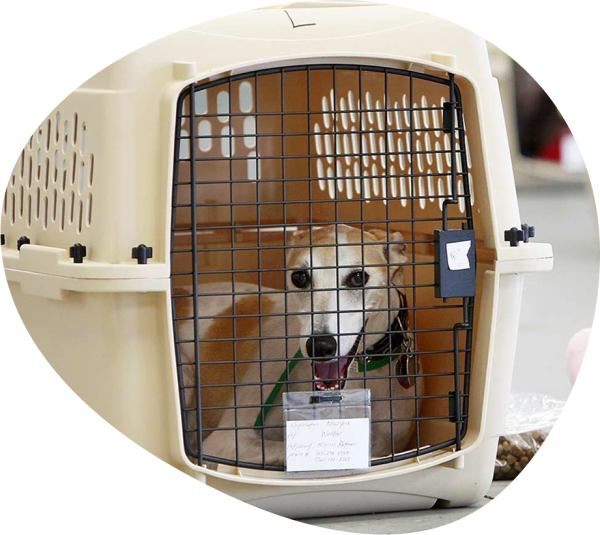TRANSPORT BOX
FOR YOUR PET TO TRAVEL HE / SHE NEEDS A KENNEL (TRANSPORT BOX) (UNLESS TRAVELING IN THE CABIN) ACCORDING TO BREED, SIZE, MODALITY AND DESTINATION.


Below are some tips for complying with international standards. Tips on choosing a cage or kennel.
-
The kennel or pet cage should be large enough for your pet to stand up,
turn around and lie down comfortably. Your pet must not touch the ceiling standing or sitting inside. -
Brachycephalic (short nose) breeds will require a larger size than normal
for most of the rare airlines that allow them to fly in cargo. See the sizing
instructions below. -
It should be made of fiberglass, metal, hard plastic, soldering metal, solid wood or plywood (note that not all airlines will accept wood crates, eg Air France and KLM). If it is of wood, it must be treated and have the
corresponding seal. -
The floor must be solid and watertight. It should be lined with an adult
towel / diapers (as long as your pet does not eat them) etc. -
The door must have a secure, all-round locking system with the pins
extending at least 1.6 cm (5/8 in) beyond the horizontal extrusions above and below the door. Many airlines also require that the door be secured with clamps at each corner. Doors should be made of metal. The door and all ventilation openings should make it impossible for your pet to stick its muzzle or paws out. -
Screws and locking threads should be made of steel (plastic fasteners are
not accepted). We recommend that you use these screws in your pet's
box to make sure there will be no problems. In addition, many airlines require clamps at the corners of the kennel or cage. "Clip" locking systems are not accepted. All fasteners must be in place. -
Both water bowls and food bowls should be attached to the inside of the
front door and be refillable from the outside of the carton without opening the door. Small funnels attached to the door by clamps make it easier for air handlers to recharge their bowls. The dry food must be placed to the top of the carton in a sealed and transparent plastic bag. (Food is there in case the plane deviates). Pets should travel on empty stomachs. -
Ventilation must be provided on all four sides. The total ventilated area
shall be at least 20% of the total surface area on all four sides. Holes in
ceilings or bases are prohibited. Additional holes (other than the
manufacturer's) on the sides may be restricted at the time of shipment.
The ventilation holes should not be blocked or blocked in any way. -
Kennels should have no wheels.
LAR - CR82 - WOODEN KENNELS
For breeds that airlines consider as potentially dangerous or when the pet is too large to fit an industry kennel. Among other, airlines normally list breeds like:
-
American Pitbull Terrier
-
American Staffordshire Terrier
-
Staffordshire Bullterrier
-
Bullterrier
-
American Bulldog
-
Dogo Argentino
-
Rottweiler
-
Caucasian Owtscharka
-
Karabash (Kangal)
Important: The list varies according to airline policy



